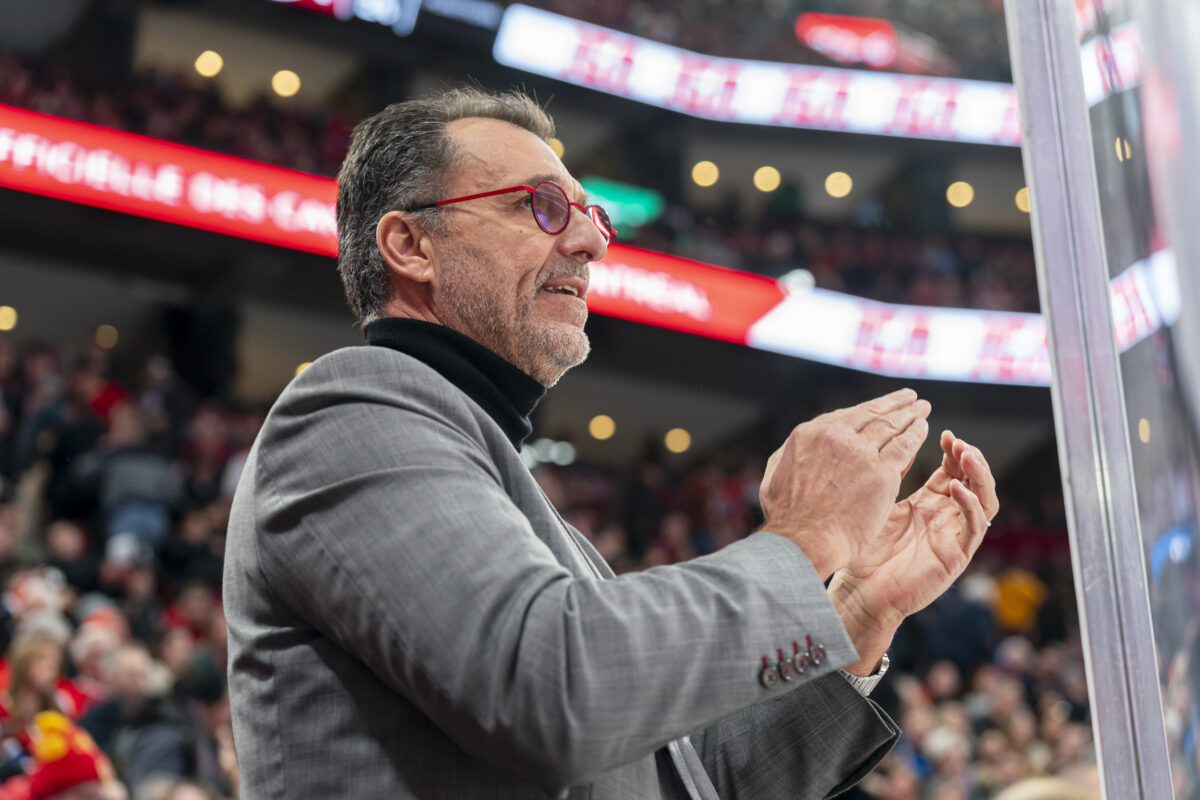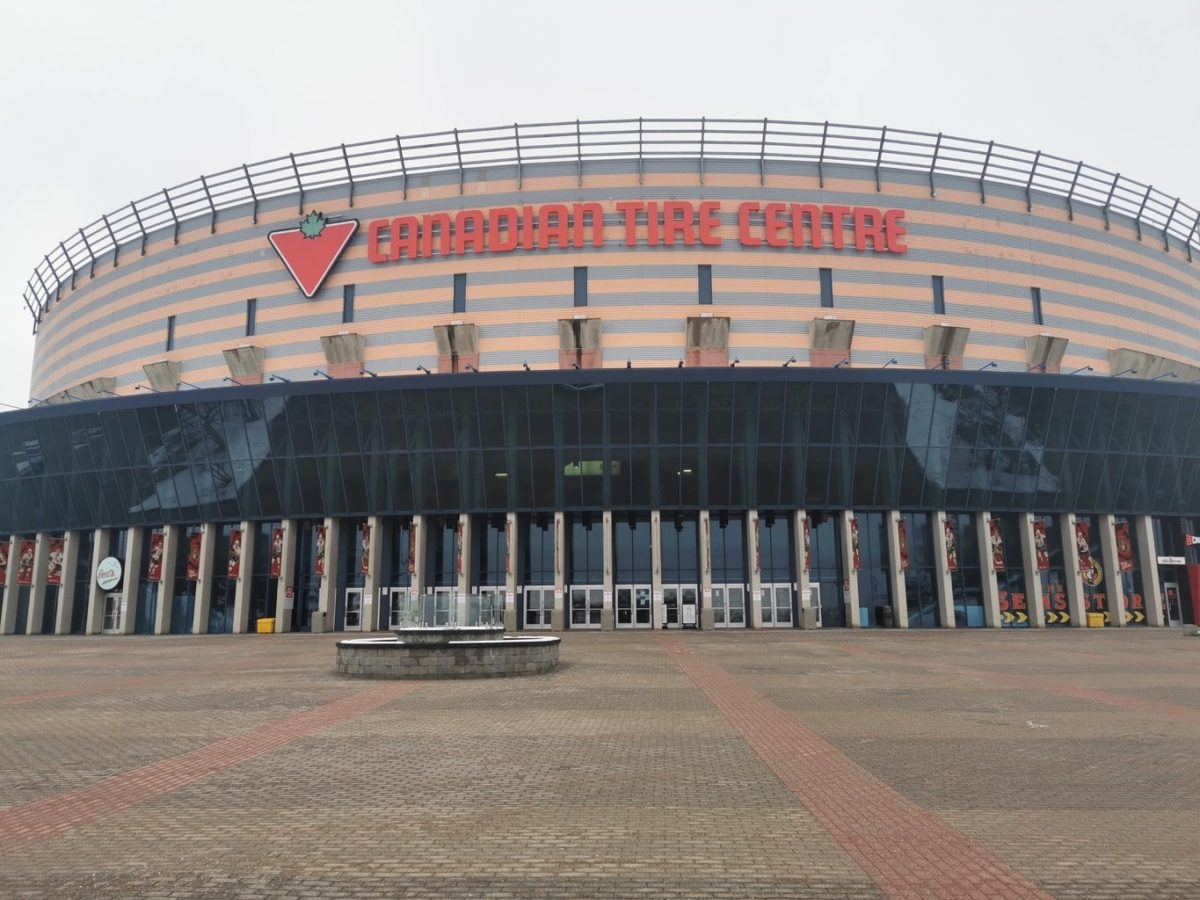On Sept. 20, just as the deadline to reach a deal ran out, the Ottawa Senators and the National Capital Commission (NCC) announced “an agreement in principle” to bring a new NHL rink and events centre to LeBreton Flats. Senators fans everywhere outside of the west end of Ottawa were exultant on hearing the news. It finally seemed that their dreams of watching the Senators play in a rink closer to where they live were coming true.
Except that they aren’t, and chances are, never will. That is, not until somebody ponies up the estimated $1.2 billion (and quickly rising) cost of a new home for the Senators at LeBreton Flats. Until that happens, the Senators will stay put at Canadian Tire Centre (CTC) in Kanata.
But don’t take my word for it, even the Senators’ president Cyril Leeder acknowledged as much saying, “(There is) a lot of heavy lifting to do. There are just too many parameters, too many variables to predict how long it’s going to take. I know it’s years, not months, before a shovel goes in the ground.
Let’s look at why Leeder is dampening expectations on when a new rink gets built at LeBreton.
Senators’ Agreement in Principle with NCC Just a Stopgap Measure
When two sides to a business negotiation announce they’ve reached an agreement in principle with no details on anything other than assurances of their good intentions, it’s a sure sign they are unwilling to commit to anything. As the saying goes, the road to hell is paved with good intentions and the agreement between the Senators and the NCC may be one of its paving stones.
The only progress that the two sides appear to have made in two years of negotiations is that instead of leasing land for a new arena, the Senators will purchase 10 acres “at fair market value”. Yet it’s as clear as mud as to who decides what “fair value” is and what happens if one side decides it isn’t. In other words, even something that should be as straightforward as a land purchase is up in the air.
All of this is likely the reason that Senators’ majority owner Michael Andlauer had to acknowledge to reporters when commenting on the deal that “I would love to say that in five years, we’re dropping the puck (in the new arena). It’s certainly possible, I’d like to under-promise and overdeliver so once the process gets started, we’ll probably have a better idea as the year goes along.” Fudge can’t get more wishy washy than that.
New Arena for Ottawa Senators Needs Public Money
The Senators must know that asking for public money to build a new home for the team will get weighed down in political controversy. That may be why Leeder and Andlauer have contradicted each other in recent public remarks about the financing of a new rink.

On the one hand, Andlauer seemed categoric on Sept. 11 explaining that the new arena, “cannot happen without public support” (from, Bruce Garrioch, “Ottawa Senators owner Michael Andlauer on LeBreton deal: I think we’ll get there”, The Ottawa Citizen, 11/9/24). Even so, Leeder said just nine days later “If you look at the history in Canada, public venues have not been funded by the taxpayer. That’s the history, that’s what we’ve done in this country and that’s our expectation as well.”
Leeder is right in that Bell Centre in Montreal, Scotiabank Arena in Toronto and Rogers Arena in Vancouver were built largely without government money. Yet this underscores the point that while new rinks can be built with only private money in large hockey markets, they can’t in small markets like Ottawa.
Take Calgary for example. The new arena that will house the Calgary Flames comes with a price tag of $926.4 million. Of that, the City of Calgary is on the hook for $850.3 million while the Province of Alberta is kicking in $30 million. The Flames’ owner – the Calgary Sports and Entertainment Corporation (CSEC) will pony up $40 million but enjoy a sweetheart lease agreement under which they’ll pay $17 million each year compounded at an annual rate of just 1% for 35 years. All told, John Q. Taxpayer in Calgary is covering over 90% of the cost of the Flames’ new arena.
Related: Why Do Cities Still Publicly Fund New NHL Arenas
Of five new NHL arenas that opened in the last 10 years, just two needed government support – Rogers Place in Edmonton and Little Caesars Arena in Detroit. The remaining three – the New York Islanders’ UBS Arena, the Vegas Golden Knights’ T-Mobile Arena and the Seattle Kraken’s Climate Pledge Arena were launched with no public money.
What is important to keep in mind though, is that these arenas are multipurpose facilities hosting many events each year ranging from National Basketball Association (NBA) games, college basketball, professional wrestling, mixed martial arts and large concerts. Ottawa is too small to attract the kind and number of entertainment events that Las Vegas, New York City and Seattle can.
Given that it’s Ottawa, I wouldn’t blame any owner of the Senators for demanding public money to build a new rink at LeBreton. Sure, many will dismiss that as socialism for capitalists, but it’s not like the Senators are the ones pressuring for the move. It’s their fans outside of the city’s west end and city politicians desperate to revitalize a moribund downtown.
Business Case for New Arena at LeBreton Weak Without Public Money
The Senators have the NHL’s lowest average ticket price (US$103). Still, their ridiculously low ticket prices probably explain why the Senators’ average attendance per game reached over 95% of capacity last season at 17,580. That’s up 5% from 2022-23 even though they put a dreadful product on the ice last season.
The point of all of this is that moving the team downtown won’t result in higher ticket prices or increased attendance. Ottawa is a government town, and the civil service doesn’t buy luxury boxes or seats in the 100 Level. As for attracting well-heeled fans from Gatineau willing to pay higher ticket prices to attend a game closer to home, it’s important to keep in mind that the average household income there is only $82,000 per year – just 80% of the household income in Ottawa.
Even located at CTC in Kanata, the Senators still get sellout crowds. So why leave? How would they be better off in LeBreton Flats than they are in Kanata – especially after spending $1.2 billion of their own money on a new arena as many of their fans expect them to do. It’s hard to see how they could generate a return on that investment. That is, unless one or more levels of government comes to the rescue and picks up the lion’s share of the cost of the new rink.

What must concern the Senators is that moving to LeBreton Flats means moving out of the west end of the city. Five hundred companies are in Kanata North alone and many of them are among the fastest-growing technology companies in North America. Not only do they pay well, but they buy luxury boxes.
Not only are their well paid workers in Kanata able to afford tickets, but Kanata alone has a population of almost 140,000. Add in Barrhaven, Stittsville and a few other west-end neighbourhoods and the number of people living around CTC approaches about one-third of the entire population of Ottawa. That compares to just 100,000 people living close to LeBreton Flats. How does moving away from their most well-off customers to a location downtown make any sense for the Senators?
New Rink for Senators of No Net Benefit for City of Ottawa
Proponents of a new home for the Senators at LeBreton Flats tout the alleged spin off economic benefits for the city. Yet the truth is that there just aren’t any. Moshe Lander, a professor specializing in sports and economics at Concordia University argues that all the evidence shows that new arenas subsidized with taxpayer money are of no net economic benefit to any city. They simply displace economic activity.
Jobs created in downtown Ottawa in and around the new arena would simply replace those lost in Kanata. As for an increase in tourism, who from out of town is going to travel to Ottawa to see the Senators play just because they have a new arena? Tourists come to Ottawa because it’s the nation’s capital. That’s why you haven’t seen a flood of announcements about new hotel capacity being built in downtown Ottawa to handle a flood of tourists now that the Senators and NCC have announced their agreement in principle to build a new rink.
Not only that, but Ottawa is unlikely to attract more concert goers from out of town. Taylor Swift plays 60,000 seat football stadia not small NHL rinks. Aside from a few acts that decide to add an Ottawa date onto appearances they’ve already booked in Montreal and Toronto, Ottawa is unlikely to attract many more musical artists just because it has a new arena downtown.
According to Lander, a new arena could spark high rise development in the immediate vicinity, but that just displaces construction activity elsewhere in the city. A new arena downtown is simply not a net positive for Ottawa. The bottom line is that a new arena at LeBreton Flats is at best neutral economically and becomes a negative when taxpayers hand over public money to the owners of the Senators.
All of this is to say that it would be extremely difficult for a politician to make the case that handing over taxpayer dollars to fund all or part of a new arena for the Senators would benefit the city.
Don’t Hold Your Breath Waiting On New Arena for the Senators
There are many other obstacles aside from who pays for a new arena in LeBreton Flats before construction starts on one. It will be many years before they are resolved. In the meantime, fans of the Senators will have to live with the arena they already have in Kanata – one that wasn’t built with any taxpayer money.
